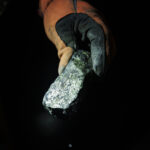In India, officials recorded more than 330,000 new Covid-19 cases today — a record sum that comes amid a massive wave of infections in the world’s second-most populous country. The surge has overwhelmed hospitals and led to devastating oxygen shortages in some cities.
The BBC described one of these harrowing cases this week, in which a woman died in a car as her family desperately searched for a hospital with a bed and a reliable oxygen supply.
“There are people lined up outside the hospital trying to get in, and every day we are getting calls every 30 seconds from someone trying to find a bed,” Amit Thadhani, the director of a hospital in Mumbai, told The Guardian. “Most of these calls are for patients who are critically ill and do need hospital care, but there just isn’t enough capacity and so there is a lot of mortality happening. Everyone has been stretched to their limit.”
The sudden surge has baffled researchers. Early in the pandemic, the impact of Covid-19 in the region was relatively modest — “Why are there so few cases in South Asia?” a headline in Foreign Policy asked almost one year ago — and, after a smaller peak in India in September 2020, cases plummeted and remained low. Researchers have suggested a range of possible causes for this new spike, including loosening public health standards, large political and religious gatherings, and the presence of more transmissible new variants of SARS-CoV-2, the virus that causes Covid-19.
“I was expecting fresh waves of infection,” Ashoka University virologist Shahid Jameel told Nature, “but I would not have dreamt that it would be this strong.” Government projections suggest case numbers will continue to climb into mid-May.
The surge comes despite India’s position as a global powerhouse of vaccine manufacturing. The Serum Institute of India, in Pune, is the world’s largest vaccine manufacturer, and the country has exported more than 66 million doses of Covid-19 vaccines, according to data reported by the Ministry of External Affairs. But India has struggled to roll out vaccines to its own population, and the leader of SII has complained that export bans in the United States have made it difficult to access critical raw materials, slowing production.
Recently, India has slowed down exports as cases rise, leading to some concerns about global vaccine supply. But doses made in India have helped immunize people in many poor countries — and also benefited some wealthier ones, where widespread vaccination is beginning to blunt the pandemic’s blow. Indeed, in the United Kingdom, which has received 5 million doses of Covid-19 vaccine from India, just 10 people died from Covid-19 on Sunday — the lowest tally there since September — and the average daily case count has dropped below 2,500, as people returned to pubs as lockdowns began to lift.
Also in the News:
• On Monday, NASA’s small robotic helicopter Ingenuity successfully completed its first flight on the surface of Mars, followed by a second, lengthier test flight on Thursday. This is the first time powered aircraft flight has been achieved on another planet. Ingenuity arrived on Mars in February, attached to NASA’s Perseverance rover. To achieve lift in the thin atmosphere of the red planet, the tiny helicopter’s blades have to spin five times faster than would be required on Earth, and NASA designed the craft to be very lightweight. So far, the flights have been brief and low: The helicopter was airborne for just 39 seconds on Monday, and 52 seconds on Thursday, and it is yet to top 16 feet in altitude. But researchers hope that Ingenuity’s success will open the door for new ways to explore the surface of planets. Michael Watkins, the director of NASA’s Jet Propulsion Laboratory in California, which is overseeing the mission, declared that the successful test flight had “freed us from the surface now forever.” (AP News)
• Last year, Covid-19 shutdowns slowed industrial and transportation activity that contributes heavily to carbon emissions. That resulted in an estimated 5.8 percent drop in carbon emissions in 2020, which The Wall Street Journal describes as “the steepest percentage decline since World War II.” But an International Energy Agency report released on Tuesday suggests that carbon emissions are poised to climb once again in 2021. With the vaccination rollout underway globally, governments are already looking to utilize carbon-based fuels to restart their economies, and the IEA estimates that emissions will climb 4.8 percent in 2021, with developing nations, especially China, contributing to much of that increase. Some experts believe that if governments do not act now to mitigate emissions, the situation could be worse in 2022. As part of its efforts to respond to climate change, the Biden administration hosted a virtual climate summit with 40 world leaders. And on Thursday, as part of the event, Biden announced a plan to halve U.S. greenhouse gas emissions by 2030. (The Wall Street Journal)
• The Idaho legislature has moved one step closer to passing a bill that critics say will open the door to a massive cull of the state’s wolf population, which biologists estimate now sits at about 1,500 animals. The new legislation, approved on Wednesday by the state Senate, would provide funding and authority for state officials to hire contractors to kill up to 90 percent of the state’s wolves, which supporters say are too numerous, a hazard to livestock, and a threat to the deer and elk populations that people like to hunt. Defenders also argued that the 90 percent figure is misleading, noting that while the state’s wildlife management plan sets a lower threshold for the number of wolves to be maintained in the state at 150 individuals, reaching that number is not a goal. But critics called the new legislation an affront to both ethics and science. In a statement quoted by Boise-based NBC affiliate KTVB, the Humane Society of the United States called the move “an embarrassment to the state of Idaho,” adding: “There is absolutely no scientific or ethical justification for this deeply misguided and dangerous legislation.” The administration of former President Donald J. Trump officially removed federal protections for the gray wolf last fall, reverting management authority of the animals to individual states. (KTVB, The New York Times)
• Although the United States abandoned its program of above-ground nuclear testing in the 1960s, a new analysis in Nature Communications shows that residual radioactive elements are still turning up in plants along the East Coast — where they’re harvested by bees, ending up in honey on grocery store shelves. The study, led by geologist James Kaste of the College of William & Mary in Virginia, focused on the presence of tiny amounts of radioactive cesium (137Cs) in honey. The researchers did not find radiation levels above the food safety standards set by U.S. regulators. The scientists, however, acknowledged that radiocesium, as it is known, could pose more of a problem for plants and animals, noting in the report that they receive “disproportionally high exposure to ionizing radiation” from radiocesium in the soil, with especially high concentrations in the American South. Radiocesium remains radioactive for decades, and west-to-east wind patterns meant that the radioactive fallout from aboveground tests in the West wafted toward the East Coast, coming down via rainstorms and resting in the soil. Plants then pull up radiocesium from the ground, mistaking it for potassium, which has similar properties. Kaste’s group tested 122 honey samples and found radioactive traces in 68, with the highest readings coming from a sample of honey from Florida. (Science)
• An ambitious new proposal to regulate artificial intelligence technology is drawing mixed reactions in Europe. Described by the European Commission as “the first ever legal framework on AI,” the new European Union plan, spelled out in a 108-page draft document, would place limitations on AI technology based on categories of risk. “AI systems or applications that manipulate human behavior to ‘circumvent users’ free will,” an E.U. official told the BBC, would be banned entirely. AI decision-making tools in areas such as education, employment, and law enforcement would be considered high-risk and subject to strict oversight. Low-risk applications, such as the use of chatbots in customer service, would be lightly regulated, and simple algorithmic tasks like email spam filtering would be unrestricted under the plan. Violations of the new policy would be punishable with fines of up to six percent of a company’s global sales. The proposal is being hailed as a milestone in the effort to corral a technology that now touches nearly every facet of human life, from transportation and education to health and criminal justice. But some critics say the policy is overly broad and gives tech companies too much leeway to regulate themselves. The plan is likely to evolve as it undergoes review by the European Parliament and E.U. member states, which could take years. (BBC)
• And finally: In 1879, the botanist William James Beal buried 20 bottles of seeds on the campus of Michigan State University. Late last week, a handful of the school’s plant scientists dug up one of the bottles, keeping up a tradition in one of the world’s longest-running scientific experiments. In the beginning, scientists collected one bottle every five years and then scattered the contents to see if any of the seeds — common weeds such as black mustard and redroot amaranth — would sprout. Later, to extend the experiments’ duration, they changed it to every 10 years, then every 20. The project’s original goal was to determine how long pesky agricultural weeds could last in the soil. Today, as The New York Times reports, farmers don’t need that sort of information to help control weeds. But scientists have continued the experiment with other goals in mind, such as understanding seed longevity to aid in ecological restoration, and to look for endangered or extinct plants that may have stowed away in one of the bottles. Just four bottles remain in the ground, which means the source material will run out in 2101. “I think Professor Beal’s got the top experiment here,” Carol Baskin, a plant and soil scientist at the University of Kentucky, told the Times. “I wish he’d have buried more bottles.” (The New York Times)
“Also in the News” items are compiled and written by Undark staff. Brooke Borel, Deborah Blum, Lucas Haugen, Sudhi Oberoi, Ashley Smart, and Tom Zeller contributed to this roundup.










